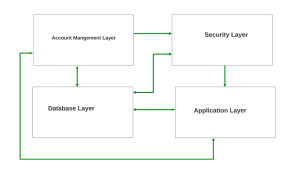Team Name
PAGANI
Timeline
Summer 2023 – Fall 2023
Students
- Emmanuel Ogba Chidiebere
- Kevin Ventura
- Notiq Timilehin Olusesi
- Richard Kalibbala
- Sandeep Adhikari
Sponsor
Dr. Chris Conly, PhD.
Abstract
This digital engineering notebook serves as a comprehensive documentation tool for engineers. Employing digital tools and platforms, the notebook provides a structured, accessible repository of information, fostering collaboration, reproducibility, and transparency in the engineering process. Through this documentation, readers gain an understanding of the project’s evolution, enabling both retrospective analysis and potential future enhancements or iterations.
Background
The conventional paper-based engineering notebook is a reliable source of ideas, thoughts, and important project data. It is also legally significant because it can support inventions and patent claims. Nevertheless, the traditional engineering notebook is becoming outdated in a time when digitization is accelerating. We have created a flexible application that functions as a portable, on-the-go digital engineering notebook in response to this changing environment.
With the help of this digital engineering notebook, engineers may digitally record, arrange, and retrieve project data as well as thoughts, offering unmatched ease of use, flexibility, and accessibility. As a forward-thinking approach, it overcomes the drawbacks of conventional techniques and conforms to the changing needs of the digital age.
Project Requirements
- Auto Table of Contents Generation: Automatically generate a table of contents for easy navigation and organization.
- Handwritten Text Recognition (HTR): Incorporate HTR technology as a method of input.
- Text Input: Allow text input as a method of entry, with limitations to prevent crashes.
- Handwriting Input: Enable handwriting input with limitations to ensure usability.
- Picture Capture & Insertion: Implement picture insertion as a form of input.
- Auto Date and Time Stamping: Each entry made in notebook is automatically date and time stamped.
- Sharing and Collaboration: Enable engineers to collaborate, review, and provide feedback on entries.
- Lock & Sign-Off on Notebooks: Prevent further edits and alterations of data by locking notebooks after completion.
- Accept Signatures: Implement a sign-off process with engineer’s signature.
System Overview
The system architecture comprises of four (4) layers:
Account Management Layer: oversees user authentication and access control.
Security Layer: dedicated to data safeguarding and authorization control.
Database Layer: responsible for efficient storage and retrieval of user-generated notes/entries while ensuring data integrity.
Application Layer: handles core functionality of the Engineering Notebook, facilitating notebook & entry creation/editing, collaboration, and overall user interaction.

Results
Demo video (link)
Future Work
While initially developed to fulfill the requirements of the UTA CSE Senior design course, the application holds potential for further enhancements and expansions. Several avenues for future work have been identified, offering opportunities to extend the functionality, improve user experience, and explore additional features. Some potential areas for future development include:
Design Assessment: Evaluate how well the app aligns with client goals and specifications, gathering user feedback for improvements.
User Experience Enhancements: Iterate on design based on user feedback to enhance overall user experience.
Security and Data Integrity: Evaluate and reinforce security measures, considering encryption for data integrity.
Blockchain Feasibility Study: Research the feasibility and benefits of integrating blockchain for enhanced data Integrity.
Technology Integration: Stay updated on OCR and handwriting recognition advancements, integrating the latest technologies.
Collaboration Features Evolution: Enhance collaboration features based on real-world usage, exploring real-time collaboration and version control.
Insights Documentation: Document insights, lessons learned, and solutions for future reference and project improvement.
Maintenance and Support Strategy: Develop a long-term strategy for maintenance, updates, and adapting to evolving technology standards.
Project Files
Project Charter (link)
System Requirements Specification (link)
Architectural Design Specification (link)
Detailed Design Specification (link)
Poster (link)
Source Files (link)